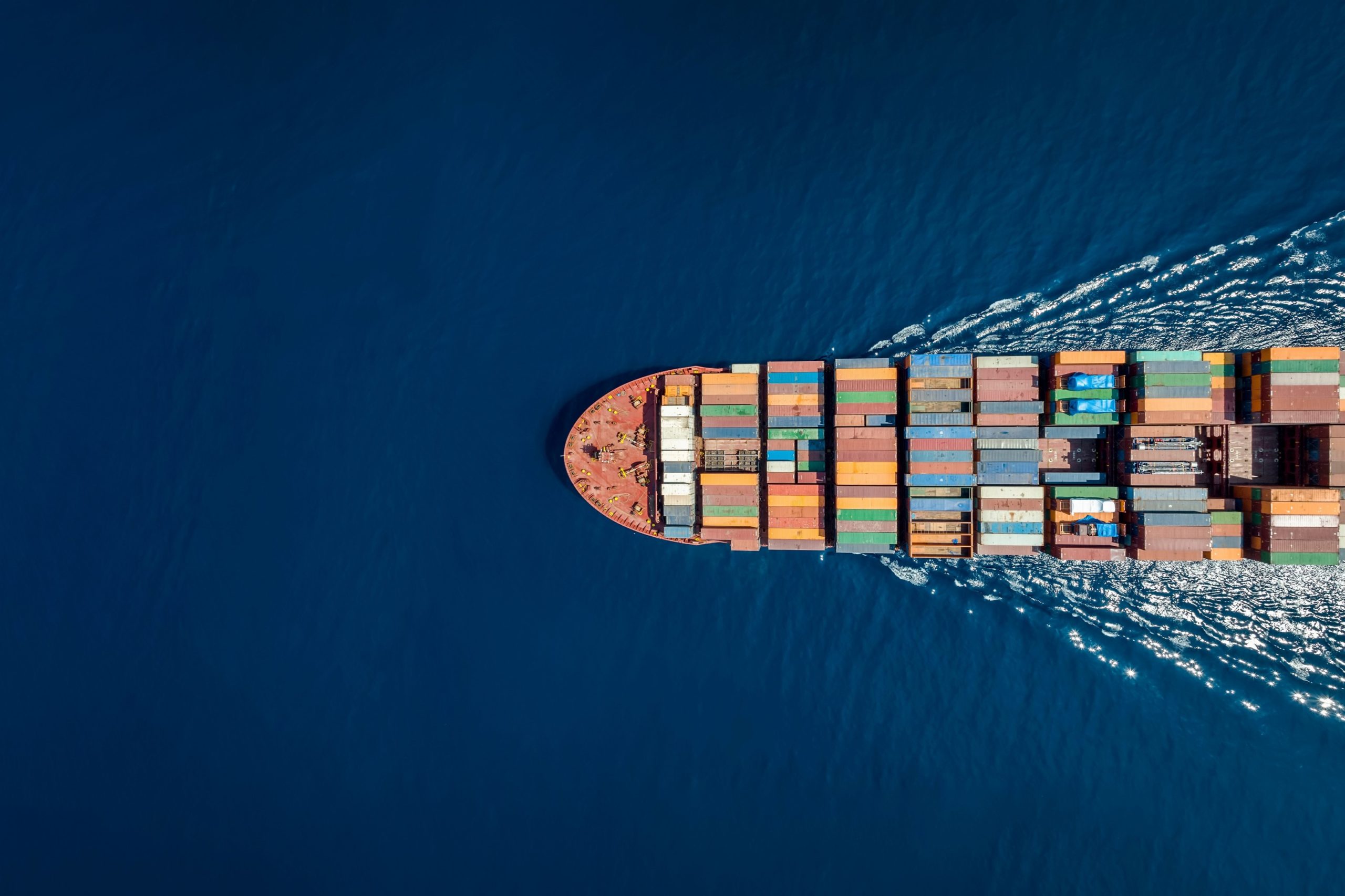Energy - Environment - Mobility
Position Paper Alcimed – Wind propulsion: how to decarbonize maritime transport
How does wind propulsion fit into the strategy of decarbonizing maritime transport?

While thermal propulsion systems have dominated the sector for 200 years, low-carbon solutions are now emerging. Among them, wind propulsion technologies. Alcimed explores the challenges of the diffusion of this new transport mean.
Today, more than 100,000 ships are sailing around the world. For their propulsion, these ships consume 235 million tons of fuel each year.
Maritime transport is made up of a small number of players. Driven by the use of extremely cheap, highly polluting and tax-free heavy fuel oil, it is today the essential link in the global economic organization.
Nowadays, more than 100,000 ships are sailing around the world. For their propulsion, these ships consume 235 million tons of fuel each year. As a result, maritime shipping accounts despite its efficiency for 3% of global carbon dioxide emissions.
Replacing fossil fuels is thus a must. This transformation of the marine industry is even more necessary than maritime transport volumes are highly linked to economic growth. If nothing is done, CO2 emissions related to shipping is expected to increase by 50% by 2050.
The international community, notably through the International Maritime Organization (IMO), has started to act on the subject. The IMO has put in place strict regulatory constraints to reduce the greenhouse gases attributable to the sector by 50% by 2050 compared to 2008. These measures include for example a conditionality for accessing several maritime areas and the introduction for new and existing ships of both an energy efficiency index and a ship energy efficiency management plan.
Economic pressure on the actors of the maritime sector is toughening. In a context of low margins and volatile fuel prices, shipowners are trying to reduce their dependence on fossil fuels. Fuel consumption represents indeed the majority of a ship’s operating costs. At the same time, to avoid a decrease in revenues, shipowners must adapt to the new expectations of their customers. Aware of the environmental, social and ethical issues at stake in their activities, many companies are willing and put pressure on their suppliers. It has been shown by announcements and initiatives taken within all sectors, that industrials see their supply chain as an essential source of environmental footprint reductions. For example, as part of its environmental strategy, whose stated ambition is to reduce its carbon footprint by 25% between 2010 and 2022, the RENAULT Group is aiming at reducing greenhouse gas emissions from its supply chain by 6% compared to 2016.
Currently, some twenty large ships are sailing with a wind propulsion system.
Many solutions exist to improve the environmental footprint of maritime transport. However, one of them appears as particularly promising: to come back to wind power exploitation. Used as an auxilliary propulsion and retrofitted, wind-assisted propulsion solutions can reduce the greenhouse gas emissions of a maritime journey by 20%. The potential is much higher on new ships, with a reduction of up to 80%. Because of this high potential, a report commissioned by the European Union in 2016 estimated that between 3,000 and 10,000 systems would be installed by 2030. In 2019, a report for the UK Department for Transport (DfT) estimated that wind propulsion solutions could be installed on 40-45% of the world’s fleet by 2050.
This technology is already available. Currently, some 20 large ships are operating with a wind propulsion system. Most of the development of these technologies is carried out by start-ups. There are about thirty developers worldwide, including about ten in France.
To learn more, read our position paper: Wind propulsion: how to decarbonize maritime transport
Many prototypes are currently being tested, and two factories are already under construction in France. To mention just a few: in Caen, Ayro will produce its OceanWings. Four of them will equip La Canopée, a the ro-ro ship that will transport the Ariane 6 rocket. In Nantes, Airseas plans to produce 1,000 units of its Kite wings by 2030. In Pornichet, Les Chantiers de L’Atlantique have installed a 40-metre mast to test a prototype of the Solid Sail that will equip the future Silenseas cruise ship. Eventually, Skipper Michel Desjoyeaux, is testing the WISAMO (Michelin) inflatable wing on a Compagnie Maritime Nantaise ro-ro ship.
The current development of maritime transport is incompatible with the climate crisis. The sector has to be reshaped and wind propulsion can support this transformation. Alcimed can support you in your sustainable mobility projects. Don’t hesitate to contact our team!
About the author,
Emmanuel, Senior Consultant in the Energy Environment Mobility team of Alcimed